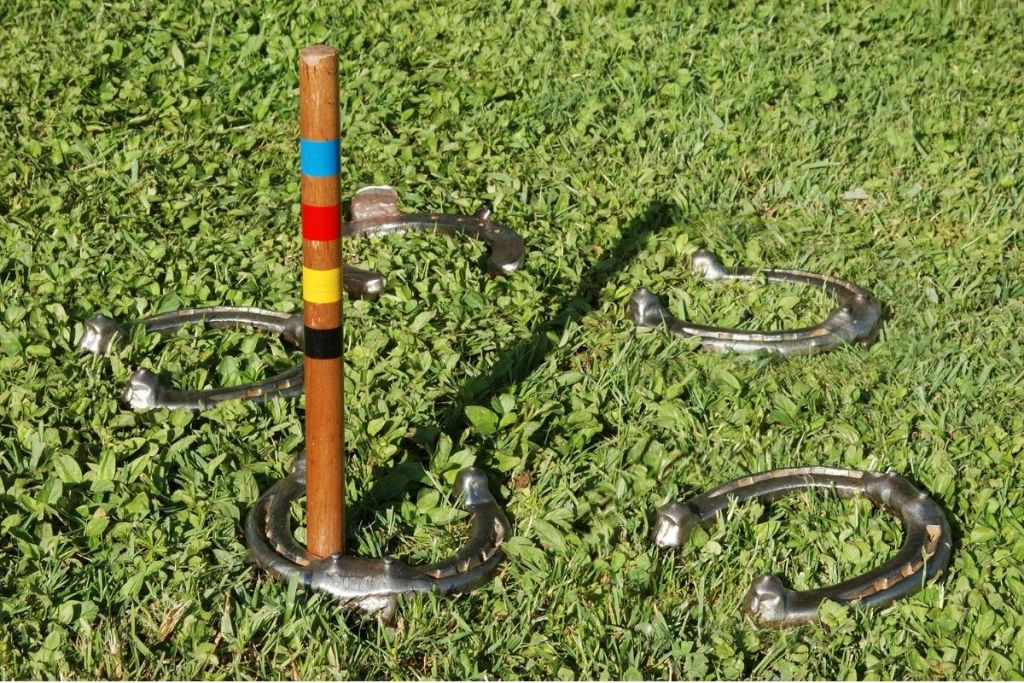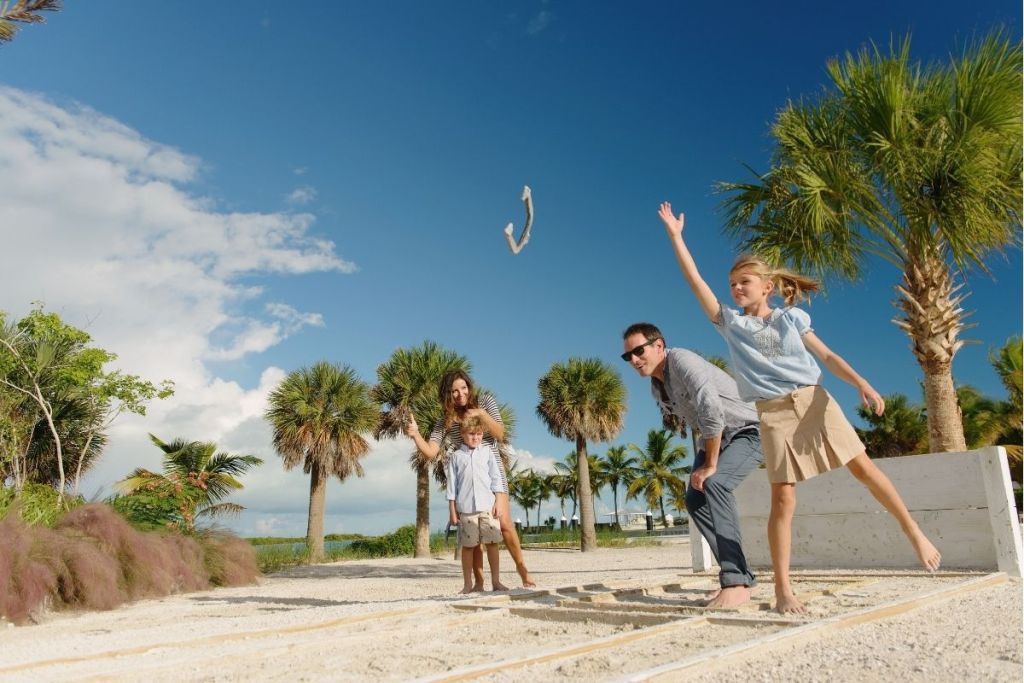Looking for backyard fun without an elaborate set-up? The game of horseshoes only requires two stakes in the ground and four horseshoes, so set-up and clean-up are simple and it’s also very simple to learn. You can start playing in a few minutes, and all your kid needs to do is toss the horseshoe just like a bean bag in cornhole. How to keep score in horseshoes and all of the other details are right here if you’re looking to learn.

How to play horseshoes
The aim of the game of horseshoes is to throw a horseshoe from a distance and get it to land around a stick in the ground. Players get points for successful throws and for who gets the closest to the stick if no one gets their horseshoe directly around it.
The official set-up for a professional game of horseshoes can, of course, be different than your family’s backyard version. In a league, the horseshoe “pitch” (playing field) has two ends. Each end has a six feet by six feet box marked on the ground, the “pitching box.” Each pitching box is another marked box which is three feet by six feet, called “the pit.” The pit is filled with sand. The stake you’re aiming for goes in the middle of the pit. Technically, the stake should be one inch around and stand fifteen inches out of the ground. The space between the two stakes at opposite ends of the pitch is forty feet.
The three-foot strip that is inside the pitching box but outside of the sandy pit is where players throw the horseshoes from (to the opposite pit). Both feet need to stay behind the line when throwing.
For playing with kids, you’ll only need to set up a stake in your lawn (no sand necessary, but if you’re playing on a beach, then great!). You can take a practice throw to estimate how far you think your kids can throw and set up the two stakes about that far apart or a little farther. Making a line with tape or paint, or using a natural line like throwing from the edge of the driveway onto the grass, is a good idea so people know exactly where they need to throw from.

How to keep score in horseshoes
Two players throw two horseshoes each in alternating turns. Tosses must be done underhand. The rules below are two scores, each four-toss cycle.
- A “ringer,” when a horseshoe lands around the stake, is worth three points.
- If no one throws a ringer, the shoe that came closest to the stake scores one point.
- If each player throws one ringer, they cancel out, and the closest shoe after those scores one point.
- If each player scores two ringers, they cancel each out again, but this time, no one gets any points.
- If one player throws one ringer and the other throws two, the player with two ringers gets three points.
- If one player throws one ringer and the other gets none, the player with a ringer gets three points plus one more if they also have the closest horseshoe besides the ringer.
- If one player throws two ringers and the other throws none, the player who got two gets six points.
- The first player to reach 21 points wins.
Variations on how to play horseshoes
Now, just like the set-up, you can adapt the scoring however makes sense for the ages and numbers you’re playing with. If you have four people playing, you could either have each person get to throw twice or make teams and each person throws once. You could simplify it and make it up like closest horseshoe per cycle wins one point no exceptions and if there is a tie (like two ringers), then the two closest (to two ringers) each get one point. Do what works for your family, especially if you have little ones just learning to count or kids who would be upset for their ringer to be canceled out by someone else’s.
You could also make up rules for kids for when it’s not currently their turn so they don’t get bored. Maybe whoever is not throwing a horseshoe at the moment needs to stand on one foot or they lose one point. This could also help with keeping kids safe by making a rule that they need to stand still as a statue behind the line while someone else is throwing.
No matter how you play, have fun!



